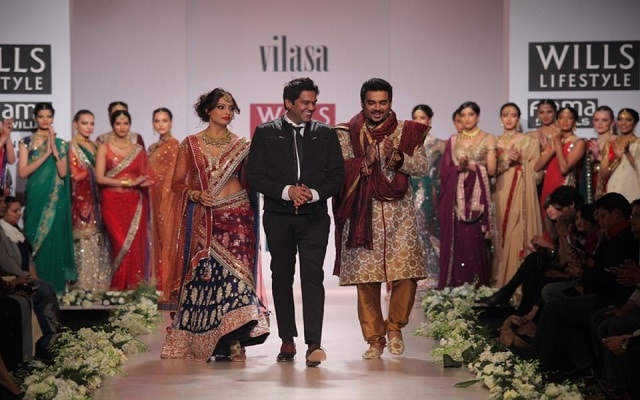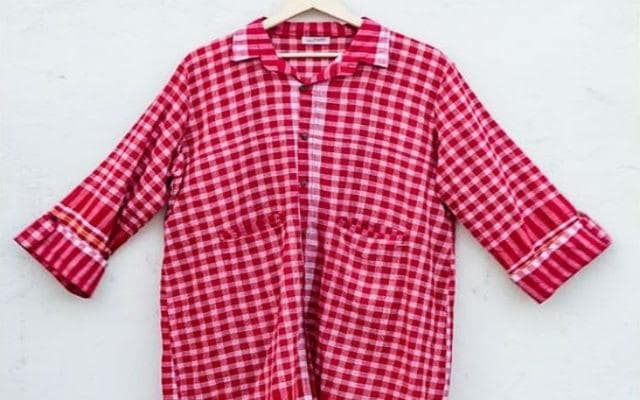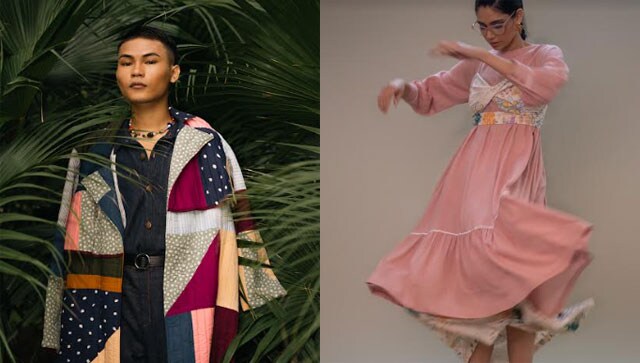World Environment Day 2023: In conversation with designers on the importance of slow fashion
It’s time to go slow with slow fashion. Designer Rocky S, Kriti Tula, designer and founder of Doodlage, Shalini James of Mantra and Shoma Badoni who uses gamcha for making clothes explains about the importance of slow fashion.

Designer Pratibha Goel on working with gamcha fabric
The fashion industry is estimated to contribute upwards of two per cent of global greenhouse gas emissions and is on track to get even worse if there isn’t major change. It has been said time and again that the apparel industry contributes a big share to the global carbon emissions. Therefore, it becomes the moral responsibility of every apparel brand to reduce this carbon footprint and embark on a trail that keeps fashion relevant without harming the planet.
As conscious consumers it is our duty to know where our clothes are coming from, who is making it, and how it’s impacting on our earth. There are many benefits to embracing slow fashion, reducing your carbon footprint to save our earth, supporting fair trade practices in fashion. By purchasing from slow fashion brands, you can know that your clothing is made ethically and sustainably.

Designer Rocky S strongly advocates the use and reuse of fabric. Embracing a circular approach not only minimises waste and conserves resources but also offers unique creative opportunities and resonates with conscious consumers, aligning with our brand’s commitment to sustainability and craftsmanship. He says, “Embracing slow fashion is crucial for promoting sustainability, quality, and ethical practices. By creating timeless, high-quality pieces and prioritizing fair labour, we contribute to a more responsible industry.”
Related Articles
Rocky’s fashion policy revolves around ethical practices. We prioritizes and ensures transparency in the supply chain, minimizes waste through responsible production practices and supports ethical labour conditions. By following these principles, he aims to create a positive impact on the fashion industry.

Rocky explains, “I employ various techniques to reduce fashion pollution. These include production methods, designing for durability and longevity, promoting circularity through recycling and upcycling and educating my team. By combining these strategies, I aim to make a significant positive impact on reducing pollution in the fashion industry.”
Sustainable Fashion has come to play a major role and seeks to minimize the negative and harmful effects on the environment. Before we delve into sustainable fashion, it is important to understand WHAT Sustainable Fashion is and what constitutes it. Ketan Pishe, Partner, P N RAO says, “Sustainable Fashion are garments, which are designed, manufactured using natural fabrics. In other words, Sustainable Fashion are those clothing that are made and used in ways that are environment friendly. It also includes processes, activities and people to achieve carbon neutrality. For eg. Under the Signature Wear by P N RAO BRAND, apparels are designed and made using natural fabrics that confirm to sustainable fashion norms and aims to reduce carbon footprint. Another aspect which demonstrates our care for the environment goes back to the ideology of our founder late Shri Pishe Narayan Rao of not wasting a single piece of cloth – a value that we are carrying on, even to this day and living up to his founding philosophy.”
Talking about sustainable fashion of World Environment Day Kochi based fashion designer Shalini James of Mantra says, “Hand-crafted textiles form the key resource of our brand. The handloom sector must be acknowledged for its strengths such as minimum use of capital and power, environment friendly production processes, thereby being a true representative of slow fashion. This textile artisanship is the bedrock of our design practice. We bring together patches of hand-crafted textiles to create aesthetic collages. The ‘patch’ is a great sustainability tool in the hands of a sensitive designer. It imbibes recycling of used fabrics and reducing wastage. This collage of hand-crafted textiles finds its place on garment sleeves, hemlines and pockets, thereby becoming a mascot of our commitment to the sustenance of textile artisanship and the sustenance of the planet.”
Shalini works towards achieving zero wastage of resources, especially textiles. A lot of waste in the fashion industry comes from cutting out patterns. “We have designed patterns that result in minimum wastage. Even the little that gets pushed off the cutting table is saved and reused later in trims and accessories. Our entire team is geared to design, manufacture and retail clothing in an environment friendly manner.”
Gamcha is widely known and used as a towel in and around West Bengal, India. This was the humble towel we grew up with. It’s something that was in households all over Bengal, but with the introduction of new material, was in decline. Designer and co-founder Shoma Badoni of 145 East who works with gamcha says “We wanted to do something about this. The vibrant colours that this humble fabric brought to our lives, we wanted to spread that love warmth to every place possible. The journey of 145 East began with putting Calcutta back on the map with Gamcha making a way into everyone’s hearts. We wanted to do this the Calcutta way with art, music, film, literature and fashion which is what the city of Calcutta was always famous for.”

Shoma Badoni believes that one should make clothing look good, feel comfortable and spend less. “The real aim while constructing our garments is to make it gender neutral and we also created a campaign #buylesswearmore. While selling our garments we aim at styling one piece of clothing in four to six different ways or more. Most of our garments are reversible which gives value to the client for the money they spend. The ultimate goal about fashion is that it should definitely make the one wearing the piece feel happy and comfortable.”
Slow fashion is important because it promotes sustainability and ethical production. We feel that slow fashion could be asking for a shift from the consumers because it definitely is undeniably a bit more on the pocket. But the shift also leads to durable, better quality, personalised and bespoke designs and most importantly leads to better working conditions for the artisans. We appreciate slow fashion because it means that in the supply chain everybody gets paid well and are working under good and happy conditions which leads to the construction of a garment by ethical means.
Finding value in waste reduces the pressure on our natural resources to produce more while building alternate economies. Kriti Tula, designer and founder of Doodlage says, “We have grown to approach sustainability more holistically. Material for each product is chosen consciously. We work with deadstock, defected and post cutting waste remanufacturing with what has already been produced, using recycled material or low impact new age material. We work with NGOs, fair wage factories and for-profit social enterprises for production of our products. The last layer of the product that is packaging is also made with starch or recycled paper.”

Read all the Latest News, Trending News, Cricket News, Bollywood News, India News and Entertainment News here. Follow us on Facebook, Twitter and Instagram.
also read

Clothing as a hymn to the planet: 11.11/eleven eleven on their sustainable practices, fostering respect for artisans
The DNA of the label is in tracing the journey of the garment: the product, the services and the foundation of the supply chain, all the way back to the land and the people at the site of manufacturing.

The rise of fashion journalism: A discursive industry shift has ushered in a new wave of fashion writing
The last few years in India have shown a welcome boom in good fashion journalism, even as fashion magazines have closed down. What has brought about this shift?

New expo showcases past and future of Fashion Week
The historic looks from the runways of Balenciaga, Versace, and Moschino, the innovative works of Dutch fashion designer Ronald van der Kemp and digital fashion house The Fabricant will feature at the exhibition starting 20 May


